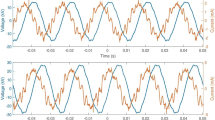Abstract
Oil was extracted from the seeds of white-flesh and red-flesh dragon fruits (Hylocereus spp.) using a cold extraction process with petroleum ether. The seeds contained significant amounts of oil (32–34 %). The main fatty acids were linoleic acid (C18:2, 45–55 %), oleic acid (C18:1, 19–24 %), palmitic acid (C16:0, 15–18 %) and stearic acid (C18:0, 7–8 %). The seed oils are interesting from a nutritional point of view as they contain a large amount of essential fatty acids, amounting to up to 56 %. In both dragon fruit seed oils, tri-unsaturated triacylglycerol (TAG) was mainly found while their TAG composition and relative percentage however varied considerably. Therefore, they showed a different melting profile. A significant amount of total tocopherols was observed (407–657 mg/kg) in which the α-tocopherol was the most abundant (~72 % of total tocopherol content). The impact of storage conditions, cold and room temperatures, on the oxidative stability and behavior of tocopherols was monitored over a 3-month storage period. During storage, the oxidative profile changed with a favorably low oxidation rate (~1 mequiv O2/week) whilst tocopherols decreased the most at room temperature. After 12 weeks, the total tocopherol content, however, still remained high (65–84 % compared to the initial oils). Hereto, the dragon fruit seed oils can be considered as a potential source of essential fatty acids and tocopherols, with a good oxidative resistance.




Similar content being viewed by others
References
Barbeau G (1993) The red pitaya, a new exotic fruit. WANATCA Yearbook 17:74–80
Baydar NG, Özkan G, Çetin ES (2007) Characterization of grape seed and pomace oil extracts. Grasas Aceites 58:29–33
Lemcke-Norojarvi M, Kamal-Eldin A, Appelqvist LÅ, Dimberg LH, Ohrvall M, Vessby B (2001) Corn and sesame oils increase serum Γ-tocopherol concentrations in healthy Swedish women. J Nutr 131:1195–1201
Van Hoed V, De Clercq N, Echim C, Andjelkovic M, Leber E, Dewettinck K, Verhé R (2009) Berry seeds: a source of specialty oils with high content of bioactives and nutritional value. J Food Lipids 16:33–49
Krichene D, Allalout A, Mancebo-Campos V, Salvador MD, Zarrouk M, Fregapane G (2010) Stability of virgin olive oil and behaviour of its natural antioxidants under medium temperature accelerated storage conditions. Food Chem 121:171–177
Yoshida Y, Niki E, Noguchi N (2003) Comparative study on the action of tocopherols and tocotrienols as antioxidant: chemical and physical effects. Chem Phys Lipids 123:63–75
Jiang Q, Christen S, Shigenaga MK, Ames BN (2001) γ-Tocopherol, the major form of vitamin E in the US diet, deserves more attention. Am J Clin Nutr 74:714–722
Kamkar A, Javan AJ, Asadi F, Kamalinejad M (2010) The antioxidative effect of Iranian Mentha pulegium extracts and essential oil in sunflower oil. Food Chem Toxicol 48:1796–1800
Silva MP, Martinez MJ, Casini C, Grosso NR (2010) Tocopherol content, peroxide value and sensory attributes in roasted peanuts during storage. Int J Food Sci Tech 45:1499–1504
Rombaut R, De Clercq N, Foubert I, Dewettinck K (2009) Triacylglycerol analysis of fats and oils by evaporative light scattering detection. J Am Oil Chem Soc 86:19–25
Sanchez-Machado DI, Lopez-Hernandez J, Paseiro-Losada P (2002) High-performance liquid chromatographic determination of α-tocopherol in macroalgae. J Chromatogr A 976:277–284
Elleuch M, Besbes S, Roiseux O, Blecker C, Attia H (2007) Quality characteristics of sesame seeds and by-products. Food Chem 103:641–650
Wrolstad RE, Acree TE, Decker EA, Penner MH, Reid DS, Schwartz SJ, Shoemaker CF, Smith D, Sporns P (2005) Handbook of food analytical chemistry: water, proteins, enzymes, lipids, and carbohydrates, volume 1. Wiley, Hoboken, pp 520–522
Maqsood S, Benjakul S (2010) Comparative studies of four different phenolic compounds on in vitro antioxidative activity and the preventive effect on lipid oxidation of fish oil emulsion and fish mince. Food Chem 119:123–132
Ariffin AA, Bakar J, Tan CP, Rahman RA, Karim R, Loi CC (2009) Essential fatty acids of pitaya (dragon fruit) seed oil. Food Chem 114:561–564
Lim HK, Tan CP, Karim R, Ariffin AA, Bakar J (2010) Chemical composition and DSC thermal properties of two species of Hylocereus cacti seed oil: Hylocereus undatus and Hylocereus polyrhizus. Food Chem 119:1326–1331
Elfalleh W, Ying M, Nasri N, Sheng-Hua H, Guasmi F, Ferchichi A (2011) Fatty acids from Tunisian and Chinese pomegranate (Punica granatum L.) seeds. Int J Food Sci Nutr 62:200–206
Akhtar N, Adnan Q, Ahmad M, Mehmood A, Farzana K (2009) Rheological studies and characterization of different oils. J Chem Soc Pak 31:201–206
Abramovic H, Klofutar C (1998) The temperature dependence of dynamic viscosity for some vegetable oils. Acta Chim Slov 45:69–77
Gurdeniz G, Ozen B, Tokatli F (2010) Comparison of fatty acid profiles and mid-infrared spectral data for classification of olive oils. Eur J Lipid Sci Tech 112:218–226
Gomez AM, Lopez CP, De La Ossa EM (1996) Recovery of grape seed oil by liquid and supercritical carbon dioxide extraction: a comparison with conventional solvent extraction. Chem Eng J 61:227–231
Aued-Pimentel S, Takemoto E, Antoniassi R, Badolato ESG (2006) Composition of tocopherols in sesame seed oil: an indicative of adulteration. Grasas Aceites 57:205–210
Choe E, Min DB (2006) Mechanisms and factors for edible oil oxidation. Compr Rev Food Sci Food Saf 5:169–186
Kanner J, Rosenthal I (1992) An assessment of lipid oxidation in foods. Inf Bull IUPAC Tech Rep 64:1959–1964
Author information
Authors and Affiliations
Corresponding author
About this article
Cite this article
Liaotrakoon, W., De Clercq, N., Van Hoed, V. et al. Dragon Fruit (Hylocereus spp.) Seed Oils: Their Characterization and Stability Under Storage Conditions. J Am Oil Chem Soc 90, 207–215 (2013). https://doi.org/10.1007/s11746-012-2151-6
Received:
Revised:
Accepted:
Published:
Issue Date:
DOI: https://doi.org/10.1007/s11746-012-2151-6




